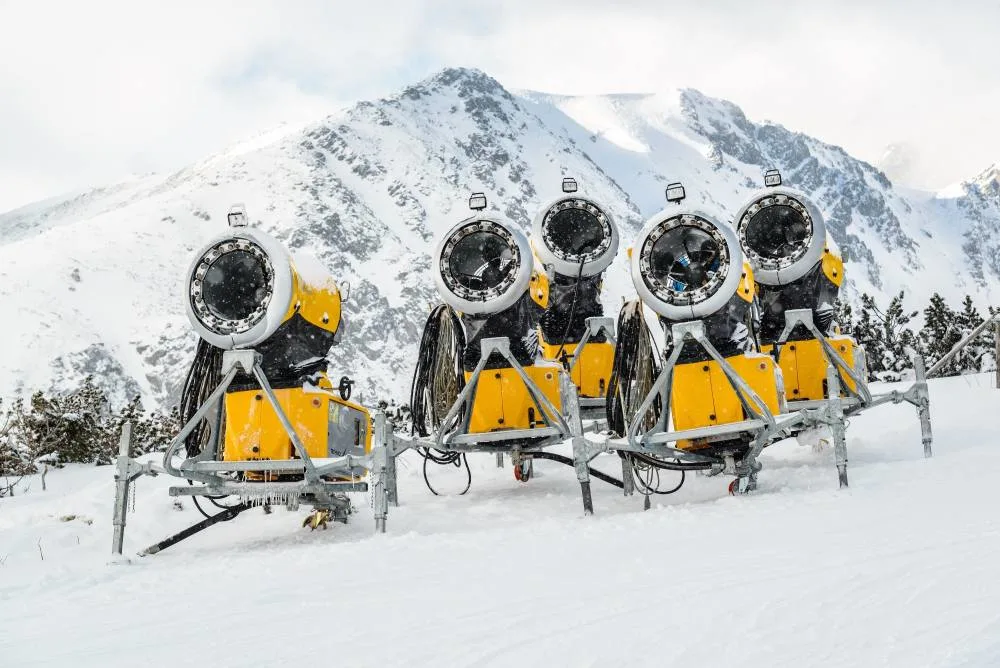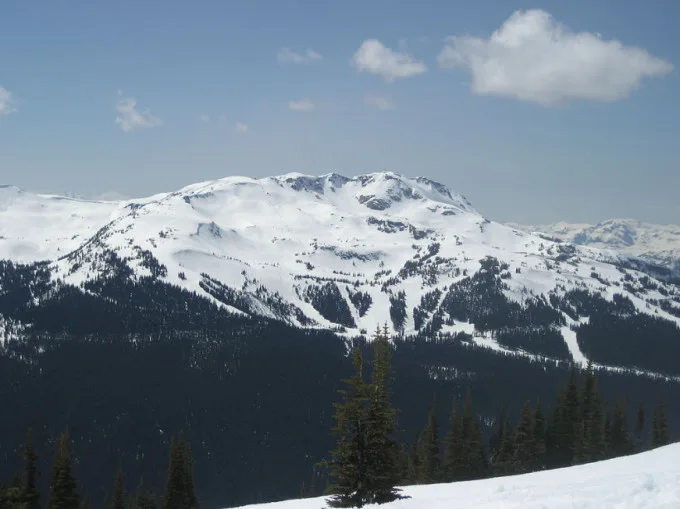
Climate change forces ski resorts to make more artificial snow
Resorts around the world are having to cope with the reality of having to make snow as seasonal snowfall declines -- and the rising costs that come with it.
In a warmer world, snow and ice are becoming more scarce and their duration in most regions has declined, especially at lower elevations. Average temperatures across major mountain ranges like the Rockies in North America, the Alps in Europe or the higher mountain ranges of Asia have risen close to 0.3°C per decade, shortening the snow cover season length by approximately five days per decade.
Higher temperatures are not only changing the timing of snow melt, they are also changing river flows, a major problem for many since snow water is essential for more than a billion people around the globe.
Beyond that vital role, snow is also a necessity for the booming sector of skiing.

In the old days, the ski season, which normally begins around December in many parts of the northern hemisphere, was followed by a few major snow falls. Today, the atmosphere is much more unpredictable when it comes to producing snow. In some places, what were once snow-covered mountain slopes are now muddy, grassy ones.
COVERING SLOPES WITH SNOW IN A WARMER WORLD
With less snow falling on the slopes, especially the ones at lower elevations, ski resorts around the world are being forced to fabricate their own. A clear example is seen below for the resort of Engelberg, Switzerland.
The less snowy winters of the past 20 years in the Alps have caused a dramatic reduction of the snow depth during the winter months. Snow cover on the slopes at elevations of 800 to 1200 meters have seen a 35 per cent reduction since the end of the 1980s, when compared to the long term mean before the changes occurred.

The changes in snow cover, and the elevation at which it accumulates, has led ski resorts around the world to invest heavily on snowmaking machines. Today, more than 60 per cent of the world’s ski slopes get additional artificial snow from machines of all sorts. For many in the business, having the technology to be able to supply additional snow to a large portion of the mountain means dedicating roughly a quarter of the total budget for the season.
Most ski resorts today have an arsenal of snow guns, snow cannons and other sophisticated technology capable of producing the ideal environment for snowfall to occur. Cold temperatures are still needed to make snow, and while some slopes today have a hard time reaching subzero temperatures for a prolonged period of time, snow will be pumped out of snowmakers at any location and time where temperatures are ideal, and eventually get distributed to other slopes of the resort as needed.
THE TOLL OF GLOBAL SNOWMAKING
Snowmaking on most slopes today is an automatic process that optimizes snow production based on temperature. Covering one hectare of slope surface with about 30 centimeters of snow requires 225 million liters of water. If you multiply all the slopes around the world by the water required to make them nice and skiable, water resource numbers become astonishing.
Beyond water usage, another concern for most resorts is the actual emission of gasses resulting from burning the fuel that runs the machines. Thousands of snowmaking devices could rely on renewable energy to produce their snow, but do not. This itself aggravates the problem of snowfall anomalies, as the added energy from the snowmakers contributes to a warmer environment and climate change.
Some resorts are already making efforts to become more sustainable when producing their own snow. In Norway, almost 100 per cent of the country's electricity comes from hydropower. Swiss resort Zermatt uses a large array of solar panels to supply about 70 per cent of the power used at the resort and part of the village.

Whistler Mountain in British Columbia, Canada. Credit: Wikimedia Commons
In Canada, the Whistler Blackcomb Ski resort, a 3,200 hectare snow-covered resort, is one of the most sustainable around. They have committed to zero net emissions, zero waste to landfill, and zero operating impact to forest and wildlife. A large portion of the $2.4 million invested by the company, will be used as energy efficiency capital, and to upgrade snowmaking machines.
And the carbon footprint resulting from snowmaking is small compared to other ongoing footprints. For instance, what a resort can generate in the form of carbon from a day of snowmaking, is only a small percentage of the carbon footprint generated by a skier travelling by plane or car to a resort hotel near the slopes.
Editor's note: An earlier version of this story contained an incorrect number for the amount of water needed to cover one hectare of slope surface.











